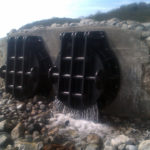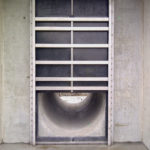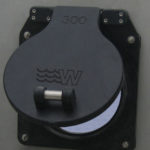Usage of wood and steel falls away as HDPE brings benefits to water control devices
Engineers involved in the control of water levels and flow face a constant battle to ensure that the control devices they use are properly maintained and operating efficiently. A great deal of the existing water control infrastructure is constructed from wood, cast iron or steel, all of which face a losing battle with erosion and corrosion; unlike HDPE, which is seeing a significant increase in usage.
Jamie Wesley, Commercial Manager at ECS Engineering Services Water Control Division looks at the benefits that HDPE components from Scottish manufacturer Waterfront Fluid Controls have over wood, steel and iron.
Design engineers are required to consider a number of factors when determining the material from which to manufacture the next product. Initial purchase cost, operating requirements, maintenance costs, reliability and long-term performance.
In recent years the introduction of High Density Polyethylene (HDPE) as an engineering material has led to its introduction in a large number of applications, including that of water control. The properties of this highly versatile material allow it to be moulded, formed and machined in much less time than would be required for the same operations in steel or cast iron.
Modern engineering projects are also much more likely to take into account the whole lifetime costs of a product, which includes the initial purchase cost, but also the expected maintenance costs, in order to assess the most suitable product for a client’s application. By looking at this bigger picture, it becomes more apparent that HDPE possesses a number of benefits that can support the argument for its selection as a major construction material.
Strength to weight ratio
One of the more obvious advantages is the weight reduction compared to metals, which makes every aspect of handling the product much easier, from the manufacturing facility to the installation site. This can reduce or even negate the need for a lifting crane onsite, which reduces the cost of installation. Furthermore, this reduction in weight does not compromise the strength of the finished product.
A reduction in overall weight also helps to minimise transport costs and for larger projects, ensure that all the necessary materials can be delivered in one shipment. In the case of applications such as penstocks, where electric motors or actuators are used to control the position of the gate, the reduced weight of the HDPE product means that a smaller motor can be used, thereby making additional savings in purchase and energy costs.
Corrosion and wear resistance
Stainless steel is already very expensive and lower grades of steel and cast iron have a difficult relationship with water, requiring special coatings or paint to be applied in order to reduce the effects of corrosion. However, these can significantly increase the cost of the finished product and also require regular maintenance to ensure continued protection.
These additional costs will have a negative impact on the whole lifetime costs of individual products when compared to a similar HDPE product. In contrast, HDPE exhibits excellent resistance to wear and corrosion without the need for any additional protection.
Once the machining process is complete, the product can be assembled and installed straight away, making lead times and installation times shorter and more efficient. In the case of flap valves, the product requires no greasing at all giving a further reduction in the whole life cost of the installation.
Environmental
A further advantage with HDPE is that it is UV stable, which means that it does not become brittle in direct sunlight, and by only using pure materials the product is fully recyclable giving a much lower carbon footprint.
In addition, the reduced weight of the HDPE flap valve compared to the cast iron components reduces the amount of back pressure on a submersible pump, allowing it to operate more efficiently. This provides benefits in terms of energy savings and adds further to the carbon savings.
Theft Prevention
At a time when metal theft is on the increase, the installation of HDPE products, such as flap valves, can help to reduce the costs associated with replacing metal equivalents which have been stolen. Unfortunately, such costs rarely amount to just that of replacement, more often the cost of repairing the damage caused by the loss of a piece of control equipment can far outweigh the cost of a new valve.
Delivering benefits
Waterfront Fluid Controls designs and manufactures a wide range of water control devices for a variety of applications. While many of its products are produced to suit a standard size configuration, the company has considerable expertise in designing and fabricating bespoke products to suit individual requirements. Some of the more recent design innovations have been with the use of HDPE, incorporating the benefits of this material into its penstocks and flap valve designs.
Waterfront has a partnership with ECS Engineering Services which provides a professional, nationwide installation and local retail service in the UK. ECS has extensive knowledge and expertise in the water industry and operates under several framework contracts for the water utilities, Environment Agency and Internal Drainage Boards.
- Some of the more recent design innovations have been with the use of HDPE, incorporating the benefits of this material into its penstocks and flap valve designs
- The reduced weight of the HDPE product means that a smaller motor can be used, thereby making additional savings in purchase and energy costs
- In the case of flap valves, the product requires no greasing at all giving a further reduction in the whole life cost of the installation








